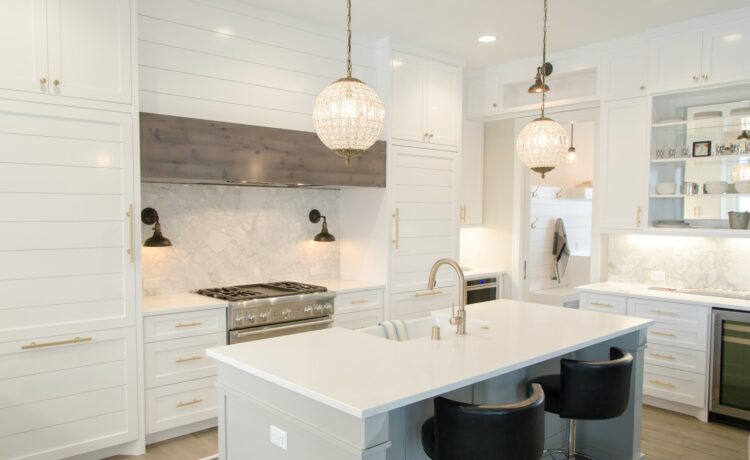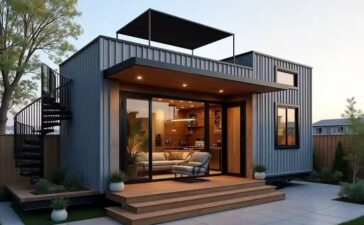Kitchens are not just about choosing attractive interior doors and modern countertops; it takes a lot to create a kitchen. It’s about adding value to the culinary experience. These practical and resourceful kitchen stove designs do not compromise on lifestyle. Proper design and effective division of a kitchen space can really help, transforming a boring task of cooking into an interesting process. Cooking for your family or having guests over for dinner, the setting and design work of a practical kitchen goes a long way in making or maring a kitchen.
Brisbane being an area of relatively pleasant climate, indoor and outdoor zones seamlessly blend together, so optimizing the kitchen layout is crucial. Design not only subdivides the area of a space but also encourages creative thinking within an essential part of a house. Now let me share with you how to create ideal conditions for cooks and eaters that are as close to ideal as you need them to be.
Identifying Your Needs and Goals
This won’t take long before you go deeper into your kitchen design, get some time and examine what you are really wanting to get from the heart of your home. You should also think about how many people live in your household and how often you host guests. Are you a daily cook or sometimes cook?
Think about your lifestyle. Are you the owner of a small restaurant emerging as a chef in search of space to experiment or simply somebody who wants fast food? It would be necessary to focus on changes that the type of your cooking and the way they are prepared influence the layout.
Next, outline your goals. What are specific storage requirements, are they crucial in terms of optimization? Well, is it possible that it is more appropriate to have a welcoming environment to the guests?
I would like to visualize what sort of options I hope to get from the kitchen. Just imagine a feast with families on the island or a warm morning with coffee and a view from the window. This vision will shape and inform all decision making going forward.
Don’t neglect looks – what design scheme appeals to you? Combining the proper function with the beauty of design can enhance utility and pleasure in this important area of your house.
The Most Common Kitchen Layouts
Selecting the proper kitchen layout becomes a very important factor when it comes to designing the kitchen for the house. These plans include U-shape, L-shape, galley and island options and are favored in kitchens throughout the Western world.
The most U-shaped kitchen enclose you with cabinets and countertop. It is a perfect solution for limited space while making enough space for storage and organization.
By comparison, the L-shaped layout provides opportunities in food preparation. Large cooking zones are possible, and traffic flow between cooking areas is facilitated because of this design.
Galley kitchens are small in width and big in depth, hence their significant functionality. They consist of two single countertops that are placed side by side to make a more efficient working space perfect for a small house or apartment.
Island kitchens are effective and beautiful. An island can be used as additional counter space or your dining table as well as improving the looks of your kitchen.
All of them meet specific requirements and demand, which is why these layouts are in demand among homeowners eager to receive more comfortable cooking conditions.
Pros and Cons of Each Layout
The knowledge of advantages as well as disadvantages of every kitchen design approach is vital while selection making.
One can observe that the U-shaped design creates much space on the counters. For larger kitchens and greetings and good for maximizing storage it is perfect. But it can appear rather confining in small homes.
L shaped home plans are easy to plan and are perfect for families and entertainers because of the open design. Nonetheless, this arrangement eliminates some possibilities of storing structures if not rightly designed.
In case you choose a galley kitchen, functionality is key. One advantage of this compact design is that it can be easily slid from one cooking zone to another but will be quite cramped if work area lighting is not well chosen.
The island arrangement comes into picture including extra places for sitting and working. However, it needs a substantial area of coverage in order to work well.
One-wall kitchen is perfect for confined kitchens or in the case of an apartment. It keeps everything easily accessible however it’s not defined or separated from other sections of your house. All of them have characteristics that may suit some users or benefit those who have a particular set of wants and requirements.
Tips for Optimizing Space and Functionality in Your Kitchen Design
It is always good to learn some simple ideas on how to get the best of everything when designing a kitchen. Begin with the two Cs: clearing of clutter from shelves and countertops. A clean environment not only feels cheerful to work in but also can boost up productivity.
You should also think about vertical storage solutions. Kitchen shelves, racks or cabinets that extend up to the ceiling make use of the entire space and at the same time makes needed items easily accessible. For the small items that are kept in a certain drawer, then it will take time going through the various junks in the drawer.
Another specific idea is using the corners efficiently. Wall units and corner cabinets with pull out shelves make good use of many wasted areas making every cubic inch count. The choice of furniture should also not be merciful; an island should be able to be both, a preparation area as well as preparation area.
Lighting also has its importance to play in the procedure. Contrasting with high localized illumination over working surfaces that provide safety and productivity, there is a pleasing ambient illumination over the whole space.
Be aware of the workflow – there should be sufficient space between major appliances considered for cooking chores. The above change, therefore, can greatly improve the workflow of any home use kitchen eating area.
That is why with the help of these strategies and planning according to the special requirements, the construction of an effective and lovely kitchen layout can be quite easy and entertaining! For those eager to enhance or design their culinary areas in the Brisbane community it is good to know that there are players such as Bayside Kitchens Brisbane to offer help from the first step right to the final one.
Factors to Consider When Choosing a Layout
The first step in choosing your kitchen design is to measure your kitchen area. You should determine the size of the area to see how much space you are to cover with tiles. This will tell us which of the layouts are possible.
Second, think about what your cooking behaviors are like. What type of eater are you; do you cook fancy meals or do you snack between meals several times a day? There are some factors that you incorporate in your kitchen design; these include your cooking style dictates the rhythm and the utility of the design.
You also have to consider traffic as well. It is important that corridors can also facilitate flexibility in traffic circulation particularly in relation to areas containing the stove, sink and refrigerator among others. The primary goal of any production environment is to get work done in a fluid and effective manner.
Requirements for storing goods and merchandise also bear a lot of importance in these centers. Determine likely usage of your storage/pantry and cabinet area depending on the items stocks in your kitchen.
Consider family circumstances in case you are among the many people who use your kitchen frequently for cooking and entertaining. It is equally important that when entertaining guests the potential for interaction is encouraged without hindering functionality.





